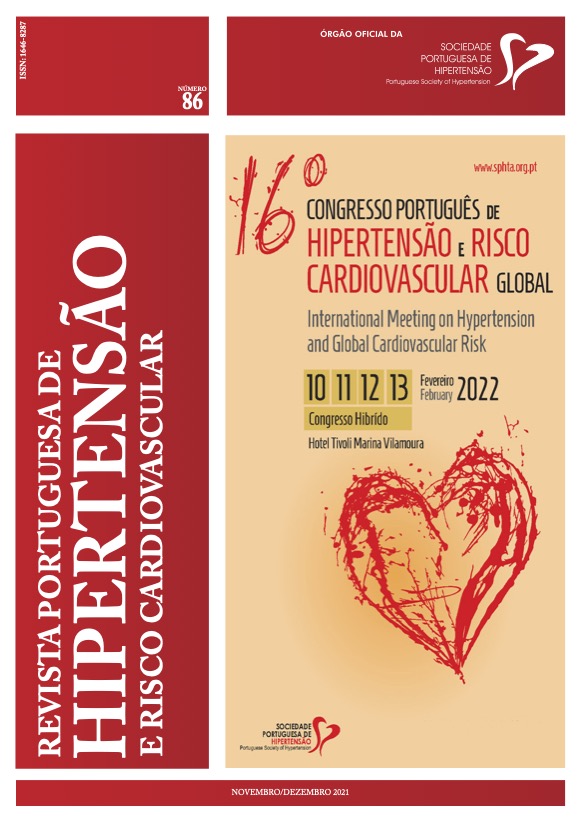EFFERVESCENT TABLETS AND HIGH BLOOD PRESSURE: WHAT IS THE EVIDENCE?
DOI:
https://doi.org/10.58043/rphrc.13Abstract
The relationship between sodium intake and hypertension is well established, the WHO recommends a limit of 5g of daily salt consumption in the general population, which is equivalent to 2g of sodium. It is known that the main source of salt consumption is associated with diet, however, other forms of consumption are often neglected, as is the case of sodium present in drugs. Sodium is widely used in the formulation of medicines and can be used as an active ingredient or as an excipient. Some pharmaceutical formulations contain large amounts of sodium as an excipient, such as effervescent drugs. Therefore, these drugs with high sodium content contribute to the overall sodium intake, and may contribute to the increase in blood pressure and, consequently, to the increased cardiovascular risk of our users.
The aim of this study was to review the literature on the influence of effervescent tablets on blood pressure and potential cardiovascular risk, using the SORT classification.
A search for Clinical Guidance Standards and guidelines, systematic reviews, meta-analyzes and randomized controlled clinical trials was conducted at Medline, Cochrane Library, Bandolier, DARE, TRIP Database, Evidence Based Medicine online, Clinical Evidence and Pubmed published between 2008 and 2018, using the keywords (MeSH terms) “effervescent drugs”, “hypertension”. The American Academy of Family Physicians’ SORT Scale (Strength of Recommendation Taxonomy) was used to assign the level of evidence and recommendation strength.
This systematic review suggests that exposure to drugs with a high level of sodium, namely effervescent, may be associated with an increase in blood pressure and a consequent increased risk of cardiovascular events.
Despite the results obtained, the present review highlights the scarcity of evidence in this field of investigation, and further studies are needed to characterize this iatrogenic risk.
Downloads
References
Ubeda, A. , Llopico, J. and Sanchez, M. T. (2009), Blood pressure reduction in hypertensive patients after withdrawal of effervescent medication.Pharmacoepidem. Drug Safe., 18: 417-419. doi:10.1002/pds.1701
Turtle, E. J., Dear, J. W. and Webb, D. J. (2013), The effect of paracetamol on BP. Br J Clin Pharmacol, 75: 1396-1405.doi:10.1111/bcp.12032
George Jacob, Majeed Waseem, Mackenzie Isla S, MacDonald Thomas M, Wei Li. Association between cardiovascular events and sodium-containing effervescent, dispersible, and soluble drugs: nested case- control study BMJ 2013; 347 :f6954
Li Wei, Isla S Mackenzie, Thomas M MacDonald & Jacob George (2014) Cardiovascular risk associated with sodium-containing medicines, Expert Opinion on Drug Safety, 13:11, 1515-1523, DOI: 10.1517/14740338.2014.970163
Perrin G, Korb-Savoldelli V, Karras A, Danchin N, Durieux P, et al. (2017) Cardiovascular risk associated with high sodium-containing drugs: A systematic review. PLOS ONE 12(7): e0180634. https://doi.org/10.1371/ journal.pone.0180634
Benitez-Camps, Mència & Morros Padrós, Rosa & Pera, Helena & Dalfó Baqué, Antoni & Bayó Llibre, Joan & Rebagliato Nadal, Oriol & Cortès Martinez, Jordi & García Sangenís, Anna & Roca, Carme & Tuero, Gabriel & Vinyoles, Ernest. (2018). Effect of effervescent paracetamol on blood pressure: A crossover randomized clinical trial. Journal of Hypertension. 36. 1. 10.1097/HJH.0000000000001733
Annex to the European Commission guideline on ‘Excipients in the labelling and package leaflet of medicinal products for human use’ (SANTE-2017-11668) EMA/ CHMP/302620/2017/PT





